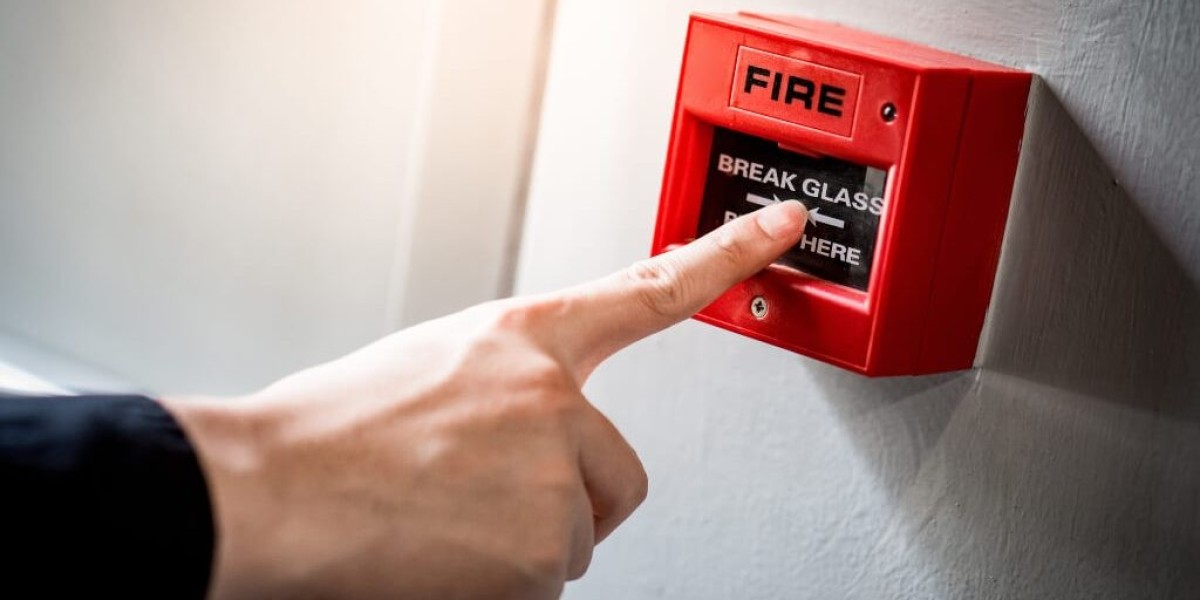Fire accidents can occur within seconds, and the only effective defense is early detection and quick response. That’s why installing a fire alarm system in Pakistan has become essential for homes, offices, commercial buildings, factories, schools, hospitals, and industrial sites. A reliable fire alarm system can save lives, minimize property damage, and provide peace of mind by ensuring that any fire threat is discovered at the earliest stage.
What Is a Fire Alarm System?
A fire alarm system is an automatic electronic safety network designed to detect fire through smoke, heat, or flame signals and alert occupants immediately. It typically includes devices like smoke detectors, heat detectors, manual call points, alarm sounders, and a control panel that manages the entire system. Once activated, the system warns everyone inside the building to evacuate and, in some cases, can also alert monitoring teams or activate suppression equipment.
Fire alarm systems have become a critical requirement for ensuring building safety, especially as fire risks increase in densely populated areas of Pakistan.
Types of Fire Alarm Systems in Pakistan
Fire alarm systems are available in several forms, each designed to suit different building structures and safety needs. Understanding these systems helps you choose the right one based on your environment.
1. Conventional Fire Alarm System
A conventional fire alarm system divides a building into separate detection zones. Each zone contains multiple detectors and manual call points. When a device is triggered, the control panel identifies which zone the fire is in, helping responders quickly locate the affected area.
This type of system is ideal for smaller buildings, such as small offices, homes, retail shops, small warehouses, and low-risk properties. It is simple, reliable, and widely used across Pakistan due to its easy maintenance and straightforward installation.
2. Addressable Fire Alarm System
An addressable fire alarm system provides a more advanced level of protection. Every device installed—whether it’s a smoke detector, heat detector, or call point—has its own unique address. When a fire occurs, the system pinpoints the exact location, which allows for faster action and reduces confusion during emergencies.
These systems are highly recommended for large buildings, including hospitals, schools, high-rise towers, commercial complexes, manufacturing plants, and areas requiring high accuracy and monitoring efficiency. Addressable systems also help reduce false alarms and provide detailed reporting, making them suitable for long-term safety management.
3. Wireless Fire Alarm System
A wireless fire alarm system uses secure radio communication instead of cables to connect devices. It offers the same protection level as wired systems but without the need for extensive wiring, making it perfect for places where installing cables is difficult or not allowed.
Wireless systems are ideal for historical buildings, renovated properties, temporary structures, or modern interiors where aesthetics matter. They offer quick installation and flexibility, especially when building layouts change frequently.
Key Components of a Fire Alarm System
Every fire alarm system includes several essential components that work together to detect fire and alert occupants. Below are the most important parts:
Smoke Detectors
These devices sense smoke particles in the air, usually from smoldering or slow-burning fires. They provide early warning and are crucial for living spaces, offices, hallways, and commercial properties.
Heat Detectors
Heat detectors respond to temperature increases caused by fire. They are recommended for kitchens, boiler rooms, industrial areas, and environments where smoke or dust may cause false alarms.
Manual Call Points
Also known as call points or break-glass units, these allow anyone who sees a fire to activate the alarm manually. They are placed near exits, staircases, and corridors for quick access during emergencies.
Fire Alarm Control Panel
The control panel is the central hub of the system. It receives signals from devices, monitors system health, and activates alarms when needed. It displays device status, trouble alerts, and fire locations depending on the system type.
Alarm Sounders & Strobe Lights
These warning devices alert occupants by producing loud audible alarms and flashing lights. They ensure that everyone, including people with hearing impairments, is notified of danger.
Fire Suppression Add-Ons (Optional)
Systems like fire balls, gas suppression units, or sprinkler activation may be integrated to help contain the fire until firefighters arrive.
How a Fire Alarm System Works
Fire alarm systems operate based on a simple but effective workflow. Here’s how the process typically works:
Detection:
A smoke detector identifies smoke, or a heat detector senses rising temperatures, or someone activates a manual call point.Signal Transmission:
The triggered device sends a signal to the control panel.Control Panel Verification:
The panel evaluates the signal to confirm fire conditions or detect any system issues.Alarm Activation:
Once verified, the panel activates alarm sounders and strobe lights to warn all occupants.Emergency Response:
People evacuate the building, and security teams respond according to the fire safety plan.Optional Automatic Suppression:
Integrated systems may automatically release fire-extinguishing agents to control the flames until help arrives.
Fire Alarm System Installation in Pakistan
Installing a fire alarm system requires careful planning and proper execution. The installation process includes:
Surveying the building layout to determine where detectors, call points, and alarm sounders should be placed
Selecting the type of fire alarm system based on building size, risk level, and project requirements
Ensuring compliance with safety standards, especially for commercial and industrial buildings
Professional installation by certified fire safety technicians
Testing the entire system to verify proper functioning
Training building staff on how to operate and respond to alarms
Proper installation ensures that the system functions effectively during emergencies and provides maximum safety for people and property.
Why Fire Alarm Systems Are Essential in Pakistan
With growing urban development and increasing fire hazards, reliable fire detection systems are no longer optional they are a necessity. A well-installed fire alarm system offers:
Early detection and faster evacuation
Reduced risk of injury or fatalities
Protection of valuable assets and property
Continuous monitoring and automatic alerts
Compliance with building safety regulations
Peace of mind for residents, employees, and owners
Fire safety is not just a requirement it’s a responsibility.
Conclusion
A fire alarm system in Pakistan plays a vital role in ensuring the safety of buildings and the people inside them. Whether you choose a conventional system for a small space or a fully addressable system for a large facility, the key is proper installation, regular maintenance, and selecting reliable components.



